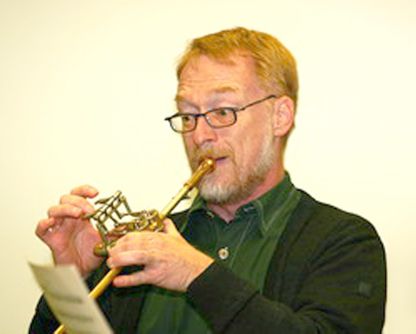@trumpetb Thank you for the comments.
Before getting into any details, I do not have an audiophile bone in my whole body. My playback is from a musicians perspective totally free of audiophile artifacts like "pinpoint imaging", high resolution or any other copy/paste thing used by the audio press. Design goals were a natural soundstage representing about row 15 in my favorite concert hall, natural sense of space and size - singers mouths should not be portrayed with the same hugeness as a piano or string section. In addition, the integration between the drivers is something that I payed special attention to. The crossover points are not audible to anyone that has visited and spent any time listening.
What you can not see: The real bamboo wood floor is covering up a concrete slab to which it is directly attached (constrained layer). It does not show any resonances below 500 Hz. The sand filled woofer cabinet also does a remarkable job of destroying anything that would want to escape the closed box. The back of the speaker has two high quality castors to ease moving the speakers. The front of the cabinet has two legs with a ball bearing at the base to couple where the woofer has the most weight. This couples with the hard bamboo with a very small area.
Soundproofing is something that I have no interest in. None of the products that I have ever tested resulted in anything sonically worthy. The lumpy decay characteristics of a treated room may be OK with commercial close miked studio recordings that have no natural acoustics, but that is not what I seriously listen to. If I want freedom of room acoustics, I use my AKG 701 headphones.
Horn loudspeakers ARE used to limit crosstalk - in a very natural way, lowering distortion and amp power requirements. With about a 60° dispersion between 500 and 20K, side walls, floors and ceilings are adequately "out of the picture". The vertical woofer array also limits dispersion in that plane.
The Van den Hul wiring harness for the tone arm is twisted, but not too tightly. The SME 3009 II tonearm does not have a removable headshell.
Speaker cable voodoo is something that I refuse to comment on. My amplifiers are near the speakers and all of the speaker level interconnects are less than 12" long.
Interconnect artifacts are audible, but not in the audiophile sense. Low capacitance, resistance and excellent shielding are simple things easily accomplished. This also reflects what recording engineers have known for decades. The miles of microphone cables do not seem to have comprimised any of the recordings that I use as references. A squirt of WD40 on all of the RCA plugs keeps corrosion minimized without compromising the metal to metal contact.
The only real issue that I had was getting a phono preamp that had enough gain to match my digital devices. So with Tim DeParavicinis help, I modified the EAR 834P to get more gain. The results with the Ortofon Rohmann cartridge (predecessor to the Winfield) now are equal to the digital playback. The level of enjoyment is equal although I have no digital or analog releases that sound exactly the same - despite mastering work.
The focus is ONLY on my own personal enjoyment and this is done simply by identifying root negative artifacts and eliminating them (one by one over many years). There is not much left to do, although the playback is not perfect. The limiting factors (room size for instance) are not possibilities that I can do anything about.
